Tarot deck progress : background research
Work in progress on an indie tarot deck - Researching tarot history, the minor arcana and sketching out from existing decks.
alpha_rats - 2020-11-27
So, I decided to design my own tarot cards!
Here is the first article about the process, condensing some preliminary research on the history and meaning of the cards, as well as the definition of a basic visual style for the deck.
While I don't believe in divination, I think tarot is extremely interesting from an artistic, historical and psychological point of view, and can be a great tool of artistic expression as a creator, and a great tool for self-reflection as a user.
While my work with VR is not accessible to most of my friends and family (seriously, most people don't own a headset!) a lot of my loved ones practice tarot. My own mom transmitted this interest to me, and I have been very fond of tarot ever since!
I am diving in, creating a deck for myself, my kin and anyone interested.
But before, I compiled some introduction and information which (personally) helped me paint a bigger picture of what tarot is and how should I proceed to design my own cards.
What is tarot?
Tarot cards are widely known as a type of divination cards, usually associated to the practice of cartomancy.
Tarot decks structure
Starndard tarot card decks are composed of 72 cards divided in two series of cards or arcanas :
-
The minor arcana is similar to standard playing card games in it's structure. It consists of four group of cards or suits (cups, swords, wands and coins), each having 10 cards from Ace to ten, plus four trumps (page, knight, queen and king). Some modern tarot decks are fully illustrated, but more traditional ones are called Pip decks, and show only abtract designs on the minor arcana cards.
-
The major arcana follows a sequential structure, with 22 cards representing 22 abstract ideas usually illustrated as allegories and following a precise sequence, unique to tarot card decks.
The illustrations below are based on my own color codification and symbols for the cards (the colors of the major arcana are based on the color wheel of the Tarot de Blain) :
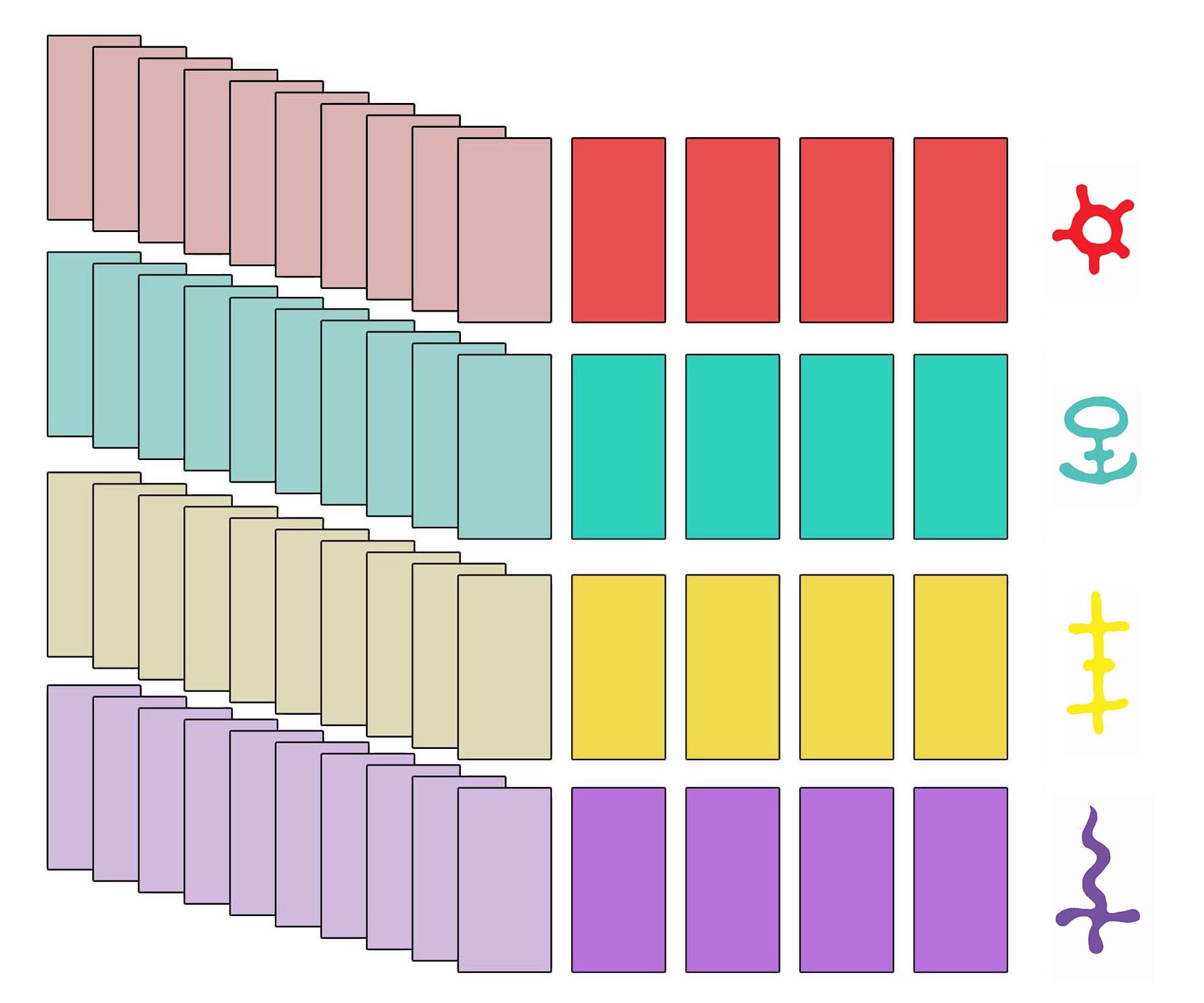
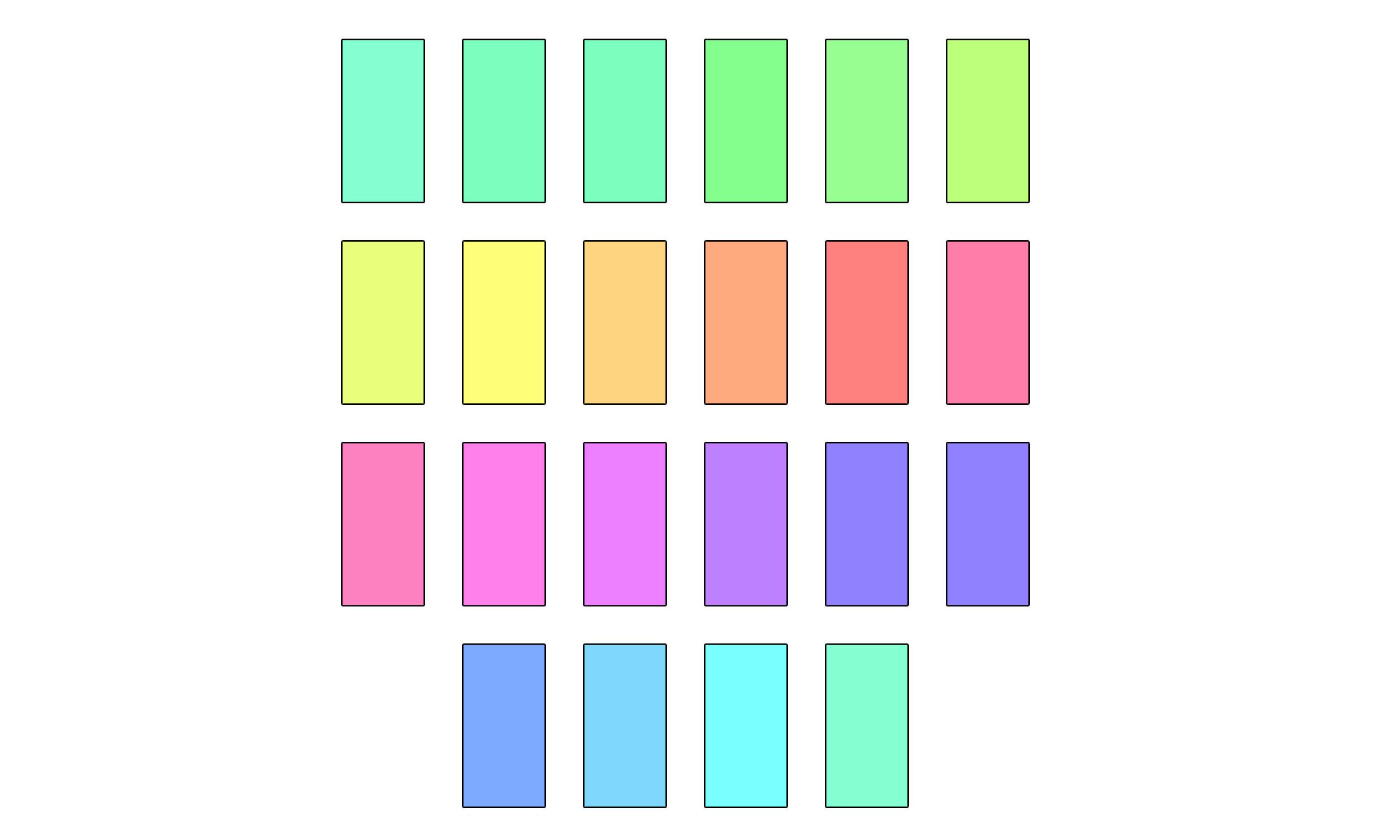
A short history of tarot cards 🌼
This is mostly how I managed to wrap my own head around the whole tarot evolution, so this history is not exhaustive, I tried to keep relatively straight to the point :)
Mamluk playing cards - origin of the minor arcana
The main structure and designs of classical tarot cards can be traced to the Mamluk deck of cards, which originated in the Arab world and was introduced in Europe via the Emirate of Granada in Andalusia (Spain) during the Renaissance (13th to 15th century). The cards became extremely popular and feature four richly illustrated suits : Coins, Polo sticks (Batons/Wands), Cups and Swords, similar to the ones found in the minor arcana of the tarot. They also show calligraphed inscriptions of poetry and philosophical citations.
The Islamic origin of the cards explains the striking difference in representation between the minor and major arcana : the representation of human figures being taboo in Islam, abstract patterns were chosen for all the suits.
- The Mamluk deck : the granddaddy of european playing cards
- Spiorad.net : an introduction to the mamluk cards, and an amazing reconstitution of the Mamluk deck.
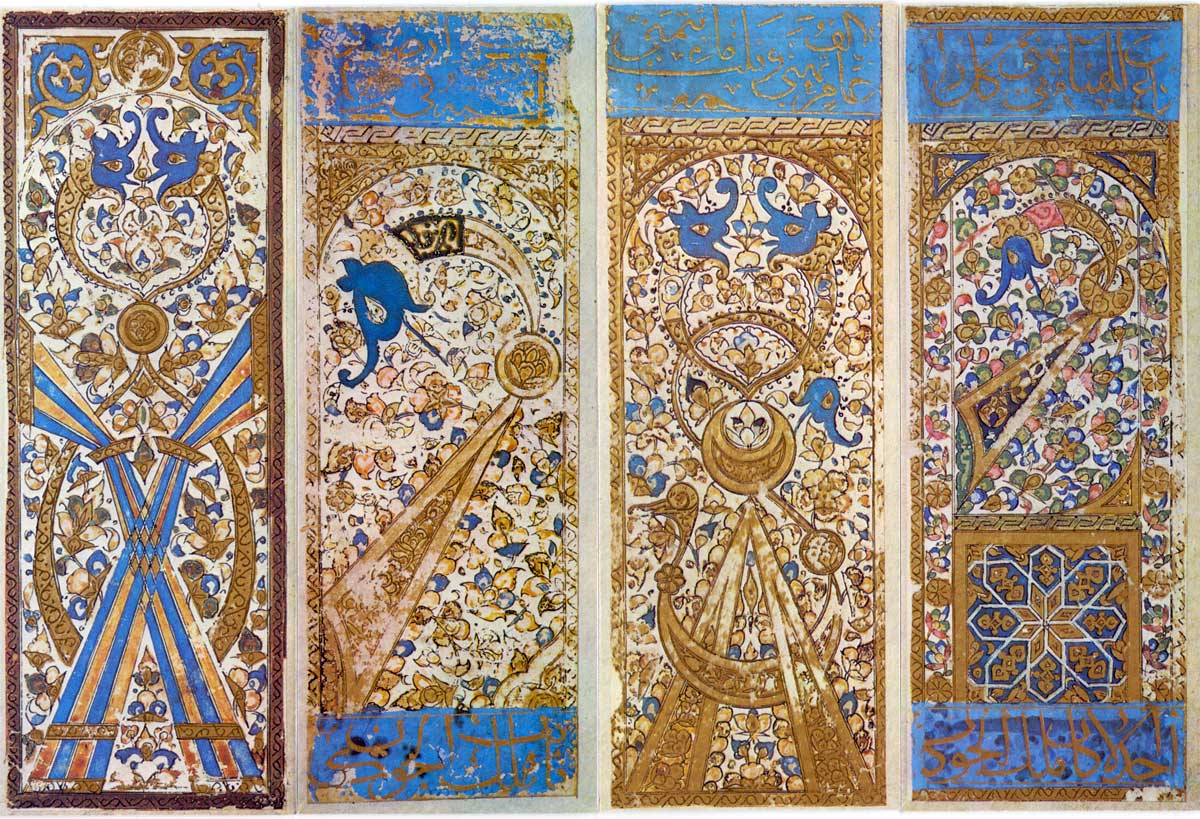
Early italian tarot card decks : Trionfi - origin of the major arcana
Trionfi are 15th century italian cards featuring allegorical themes derived from theatrical processions called Trionfos (Triumphs) which gave form to what will later be used as the tarot deck's major arcana. These cards were added to the existing card games which evolved from the Mamluk deck.
In these triumphs, allegorical characters appear one after another by order of importance, starting from the lowest (the fool) and ending in the highest (the world). These triumphs can be traced back to roman antiquity and the military parades of victorious Caesars.
At this point in time Tarot cards are supposedly mainly used as playing cards.
The Tarot de Marseille and cartomancy
Triomfi cards evolved into the cards known as the Tarot de Marseille during the 15th century, and were very popular in Italy and southern France. The exact origin of the cards is not clearly defined, and one of the earliest tarot card decks found is the Sola Busca tarot dating from the late 15th century.
A popular (and contested) theory links greek neo-platonic and hermetic philosphy to the tarot through Marsilio Ficino, an italian poet and philosopher from the Renaissance era who translated ancient greek texts from Plotinus to Latin and was very influential within the Platonic Academy of Florence. Some of his work describes a deck of cards whose description matches perfectly the illustrations visible in the Tarot de Marseille. These cards were described as a tool to learn and practice neo-platonic philosophy (which merges ancient greek philosophy with early christian ideas).
In the 17th century, two french esotericists popularised tarot cards as a divination tool : Jean-Baptiste Aliette and Antoine Court de Gébelin. The latter wrote one of the first recorded analyses of the Tarot de Marseille as a divination device, mainly based on the Tarot of Nicolas Conver from 1720. Aliette designed several divination cards, among which the Grand Etteila or "Egyptian Tarots", which notably diverges from the Tarot de Marseille. Another famous tarot deck from the era is the Oracle Belline by Mage Edmond.
During this era, other divination cards emerge as well, such as Lenormand cards.
Tarot in the mordern era (19th/20th century)
In the end of 19th and beginning of 20th century happened a strong revival of esoterism in the West which led to several actors pushing the tarot in new directions and forms, especially through the influence of esoteric societies.
Most notably, Oswald Wirth created a variation of the tarot incorporating numerous freemasonic themes. His interpretation of the major arcana expresses the progresion of the initiate from the beginning of his journey to wisdom. Members of the Order of the Golden Dawn also gave a spin to the cards with the creation of the Raider-Waite deck and the Toth deck, which incorporate Rosicrucian and Hermetic influences. All these approaches use the cards to express a path to wisdom through the card progression, similar to the progression of the initiate evolving on their path to enlightment.
Later, the tarot also attracted the attention of the psychologist Carl Gustav Jung, who saw in the tarot a perfect expression of his theory of archtypes and the collective uncouscious, linking the progression of the cards to the process of psychological individuation. This approach to tarot announces a lot of contemporary tarot practices, focusing on the psychological aspect of the cards more than on their divinatory purposes.
Contemporary tarot practice
Heriting from the evolution of the Tarot through the 20th century, the tarot as practiced today is often marked by self-improvement ideas and psychology.
Despite the history of tarot being mainly populated with masculine figures, tarot practice has been mainly a female occupation. Writers such as Michelle Tea (Modern Tarot, 2017) and Cassandra Snow (Queering the tarot, 2019) have approached this subject, re-appropriating tarot tradition and re-interpreting it through a feminist and queer lens.
While sometimes divorced from strict spiritual ideas and esoteric groups in favor of a more individual or community-driven approach, it's not always the case : most notably, the association of tarot practice with witchcraft led it to be havily practiced and adopted by wiccans, a neo-pagan tradition heavily influenced by the Golden Dawn.
A very active tarot reading community is present on the video game streaming platform twitch, with streamers such as Antphrodite reading cards to their audience. Many artists are editing and creating their own decks and distributing them online through Etsy or specialised stores like Little red tarot.
About the minor arcana
In the original tarot de marseille decks, the minor arcana illustrations (except the trumps) show fairly abstract designs, quite close to those of common playing cards : this type of tarot deck is called a pip tarot deck. My deck, however, is heavily inspired by the Raider-Waite and Thoth tarot decks which display fully illustrated minor arcana cards.
The cards of the minor arcana do not display symbols or achetypes as strong the the major arcana. They often deal with the apparently mundane, and often have ambivalent meaning (neither fully positive nor negative).
The four suits and their symbolic framing
| Suit of Disks | Suit of Wands | Suit of Swords | Suit of Cups |
|---|---|---|---|
| Spring | Autumn | Summer | Winter |
| Earth | Fire | Air | Water |
| Material, Potential | Projects, Action | Intellect, Motivation | Affect, Emotions |
Suit progression / sequence
For each of the suits, the cards follow the same progression based on their number :
| Card | Ace | Two | Three | Four | Five | Six | Seven | Eight | Nine | Ten | Page | Knight | Queen | King |
|---|---|---|---|---|---|---|---|---|---|---|---|---|---|---|
| General meaning | Beginning | Duality | Creation | Concretisation | Evolution | Transition | Victory | Balance | Apogee | Conclusion | Project | Action | Possession | Success |
The decks I used as a reference
I'm using two modern tarot decks (the Raider-Waite and Thoth), which feature fully-illustrated minor arcana cards, as my main references. Additionally, I'm also using a reproduction of a very early Renaissance deck (the Visconti-Sforza), to have a more "traditional" reference point as well.
The Rider-Waite tarot deck
The Rider-Waite tarot is an extremely popular deck designed by the artist Pamela Colman-Smith and the scholar Arthur Edward Waite, published in 1909. The deck features a fully illustrated minor arcana. A lot of contemporary tarot deck designs are heavily based on the Raider-Waite, with a lot of them being re-interpretations of the cards in a different style with only minor variations.
The illustrations are very expressive and clear with toned-down colours, and I find this deck interesting because it manages to stay very accessible while keeping a rich iconography. The style of illustrations is reminiscent of other illustrators from the same era such as Aubrey Beardsley, showing precise and minimal linework with flat coloring. This deck relies on a lot of Rosicrusian and Hermetic symbolism, which is toroughly explained in the Pictorial Key to the Tarot by A.E Waite.
👉 I'm using a centennial edition of the deck by U.S games systems, which is supposed to be as close as possible to the original edition of the cards.
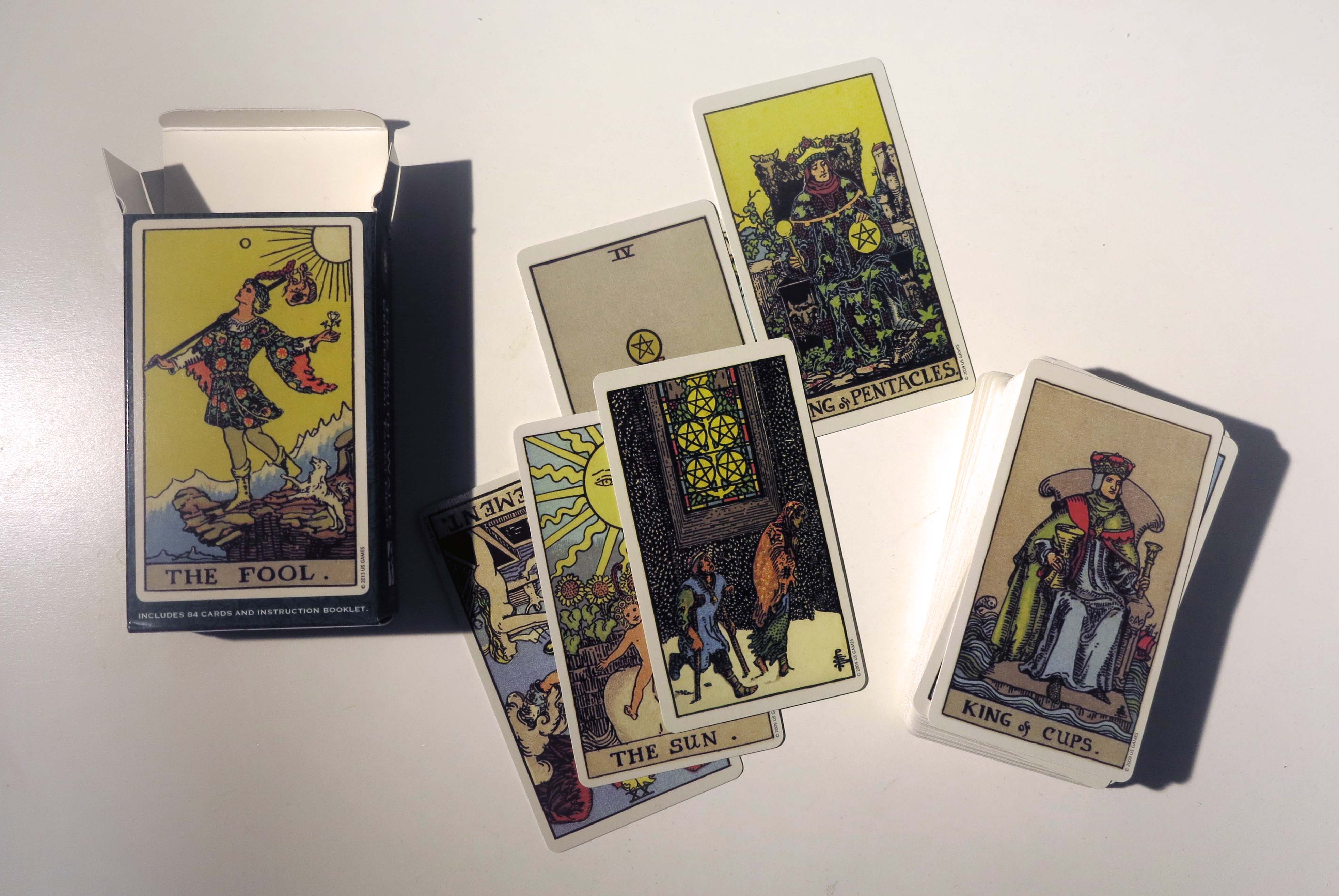
The Thoth tarot deck
This deck has been designed by Aleister Crowley and Lady Frieda Harris between 1938 and 1943, and released posthumously in 1969. The designs are much more abstract, and don't feature human figures except for the trumps and the major arcana. The title of the deck references the egyptian god of scribes Thoth. This reflects the common idea (now debunked) at the time that tarot cards originated in ancient egypt.
The illustrations are full-color paintings whith vibrant colors and elaborate compositions, often geometrical. The pictures have an art-nouveau style to them and are very ornamental. The images are less didactic, and I would say, less democratic in their approach. The cards are more difficult to read but incorporate very intricate symbols, with a lot of more esoteric references to numerology, astrology, or kabbalistic traditions. Each card of the minor arcana has also an additional title added to it's suit and number, which somehow mitigates the obscurity of the cards and adds an additional layer of meaning.
👉 I'm using a german edition of the deck by AGM Urania, in mini format.
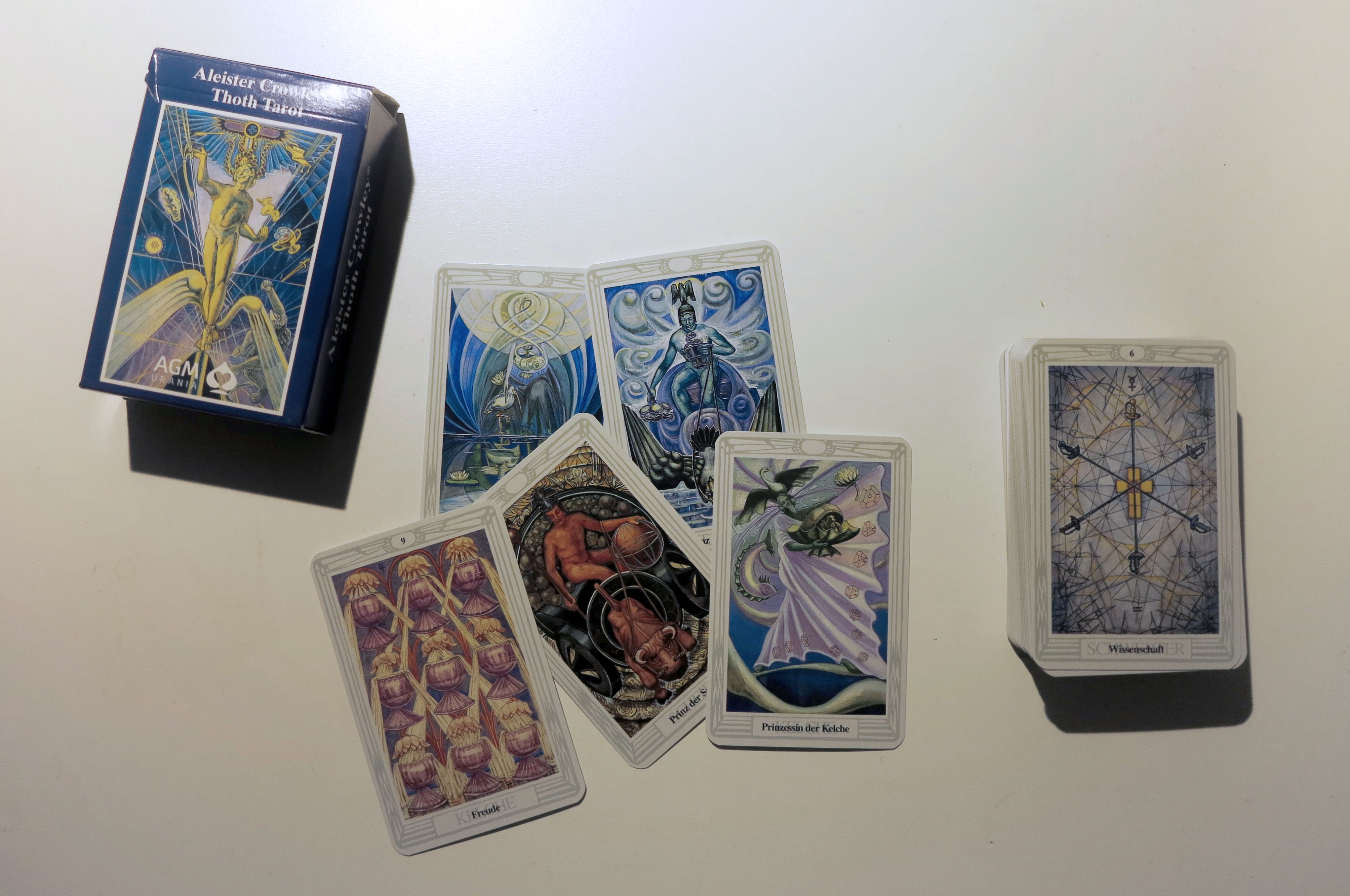
Visconti-Sforza deck (pip deck)
The Visconti-Sforza tarot deck is a reconstitution of one of the most ancient tarot sets we know of. The cards were commissioned by the Duke of Milan in 1451, to be offered to his successor. This deck is considered as being extremely influential, as it cemented the basic structure and symbolism later found in the traditional Tarot de Marseille decks.
The cards have no titles and display no numbers. As you can see, the minor arcana ressembles a lot the cards we can see in the Mamluk deck shown above when going over the origins of the tarot.
👉 I'm using a reproduction of the Visconti-Sforza deck by RacePoint publishing.
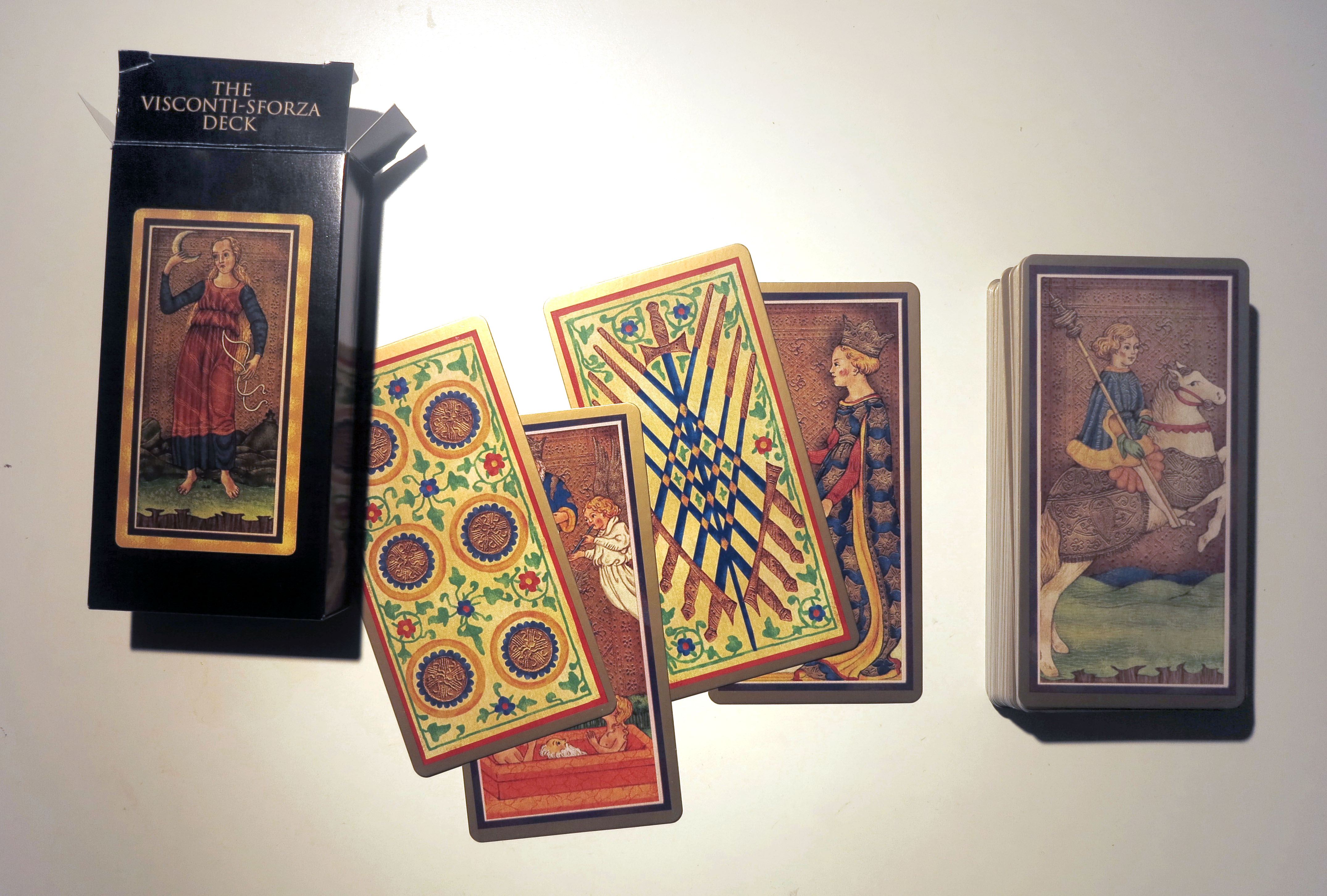
Starting to design my deck
I decided on a method to design all the cards :
-
I chose to start with the minor arcana, and tackle the major arcana later, once the whole synmbolic system and style of the deck is defined.
-
For each card of the minor arcana, I sketch out the card in the Thoth and Raider-Waiter deck without looking at it's meaning. The idea is to try to get the overall symbolic and composition from the card intuitively, and try to sense what my understanding of the card is without any indications.
-
I then sketch out designs for each card based on the sketched studies, research on their meaning, and personal intuition. I iterate on the designs until satisfisfied. To keep a feeling for how the overall deck comes together, I work as follows :
- first 4 cards of coins + first four cards of swords + first four cards of cups + first four of wands
- then move on to the 4 following of each suit,
- then 4 next of each suit,
- etc... until all the suits are complete.
Comparing the decks
Here are some scans of the cards copied from the Waite and Thoth decks : for each suit, each card is drawn side-by-side, with the Waite version on the left, and Thoth version of the right.
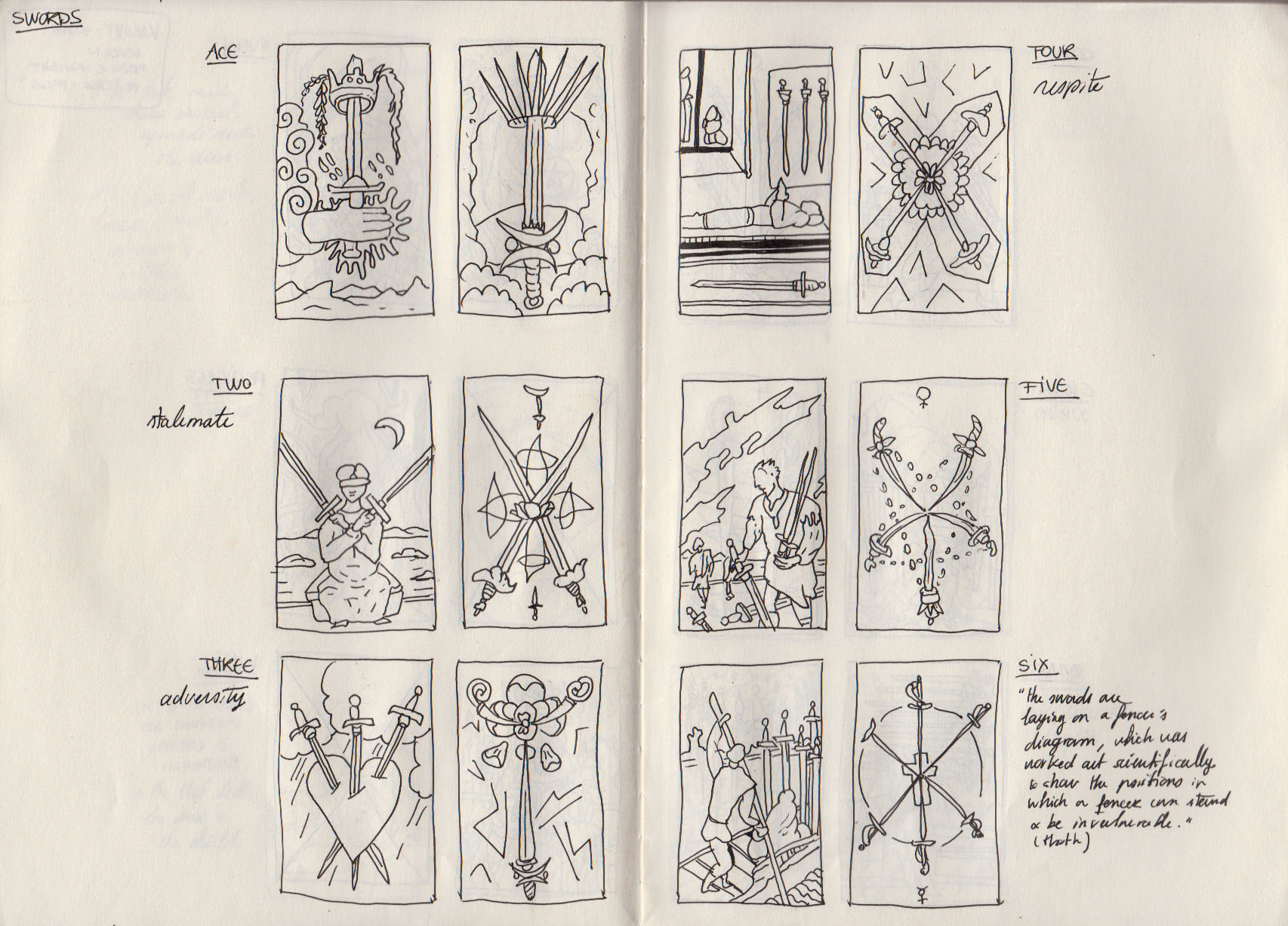
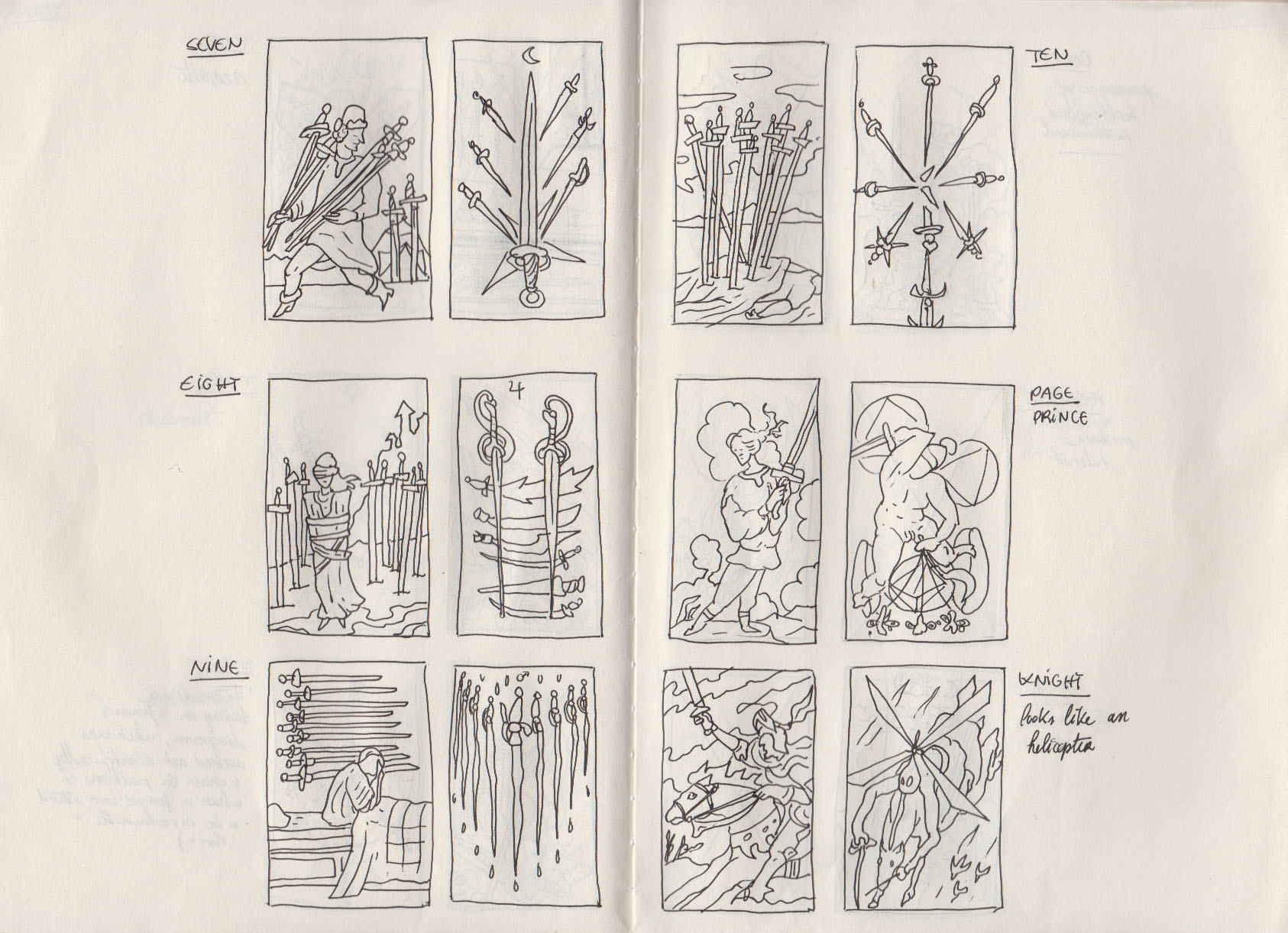
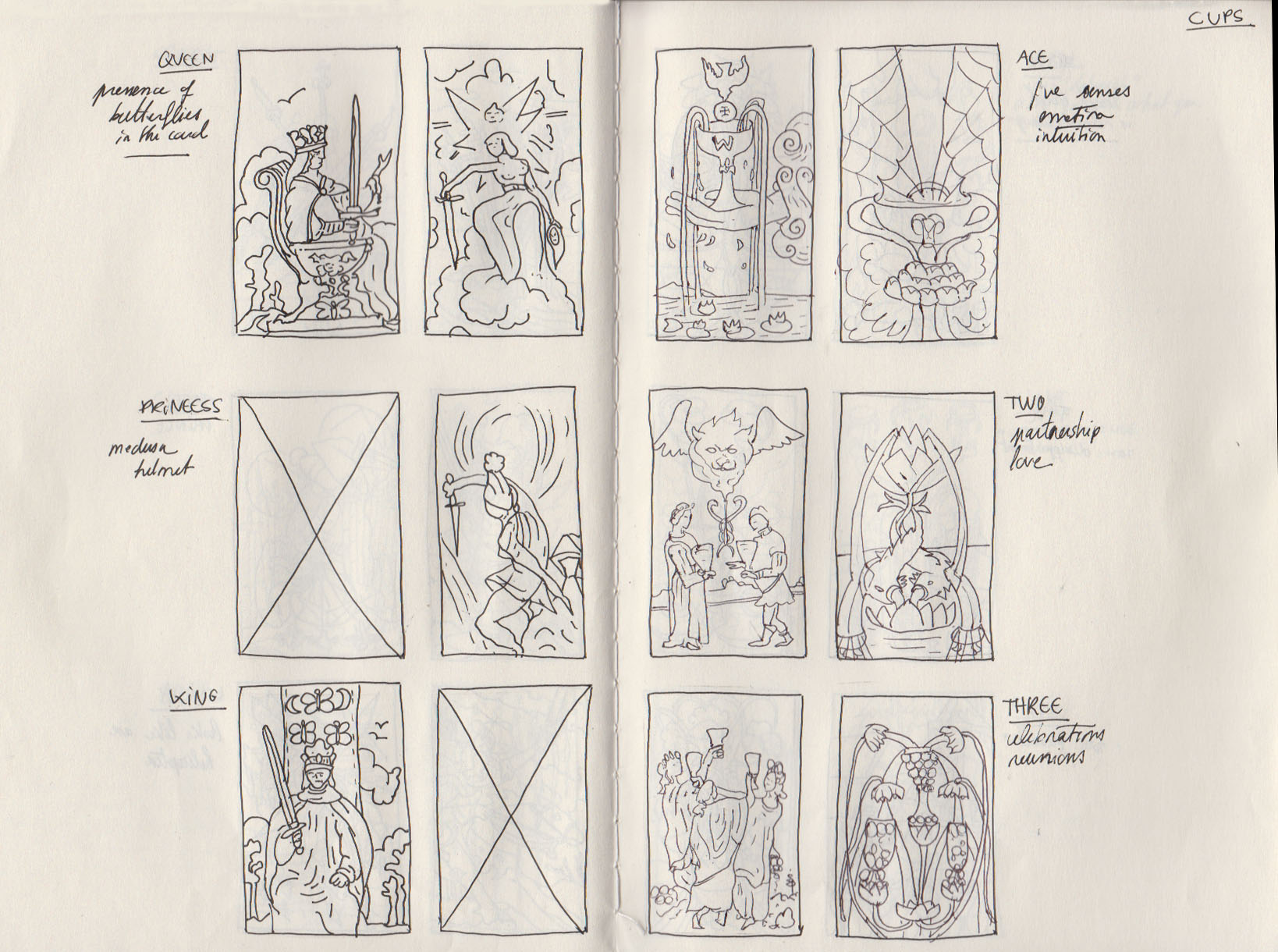

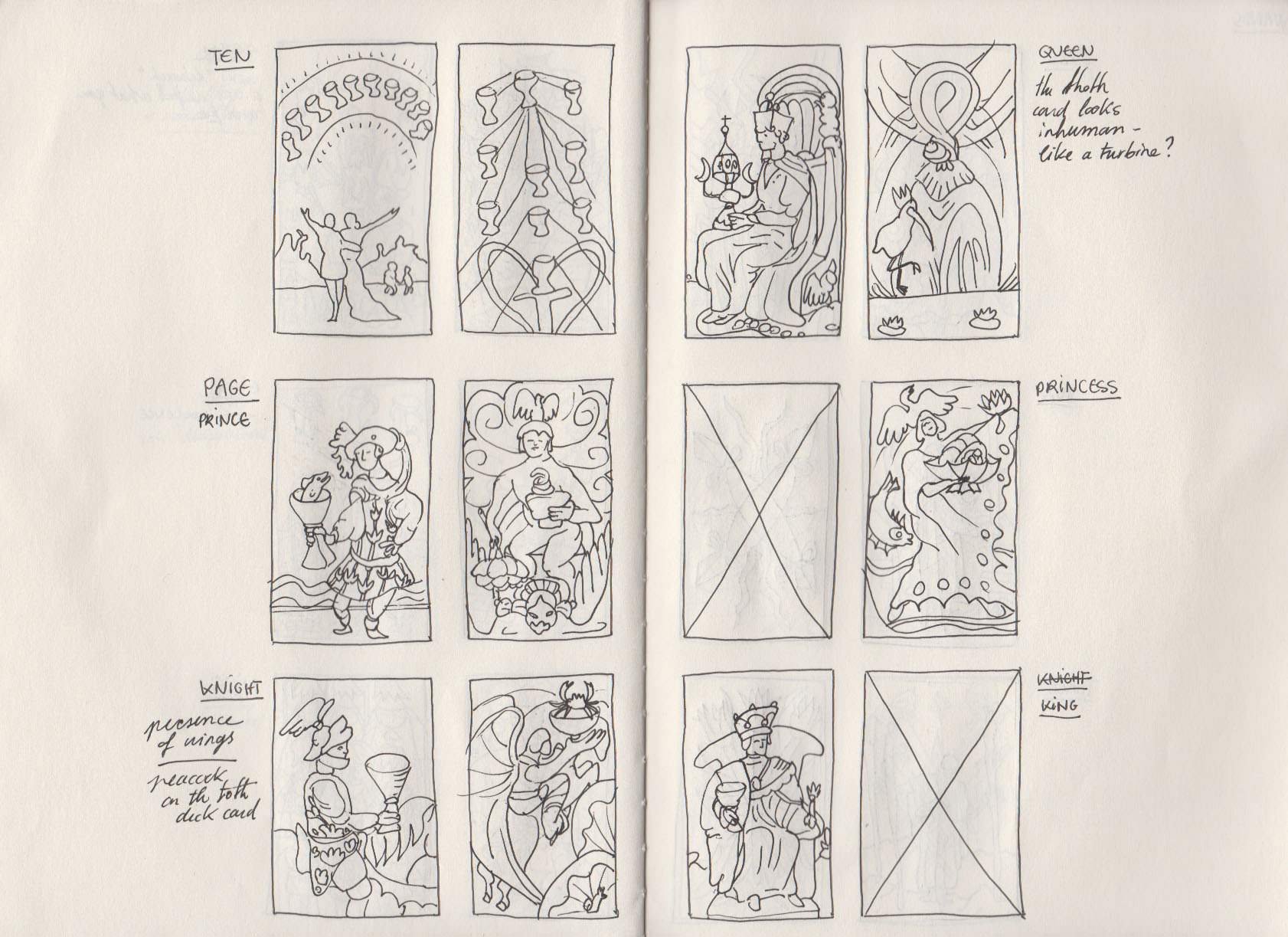

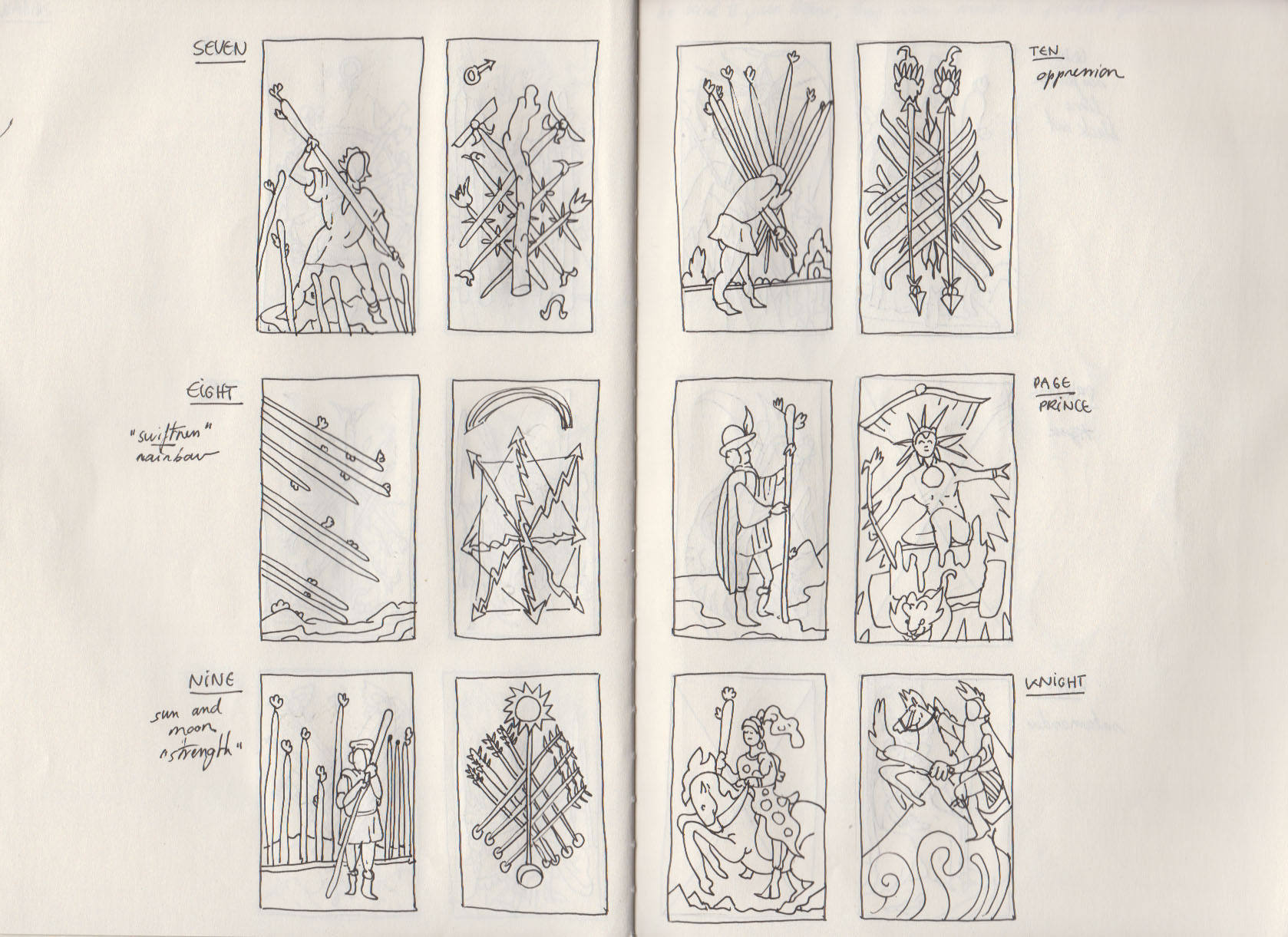
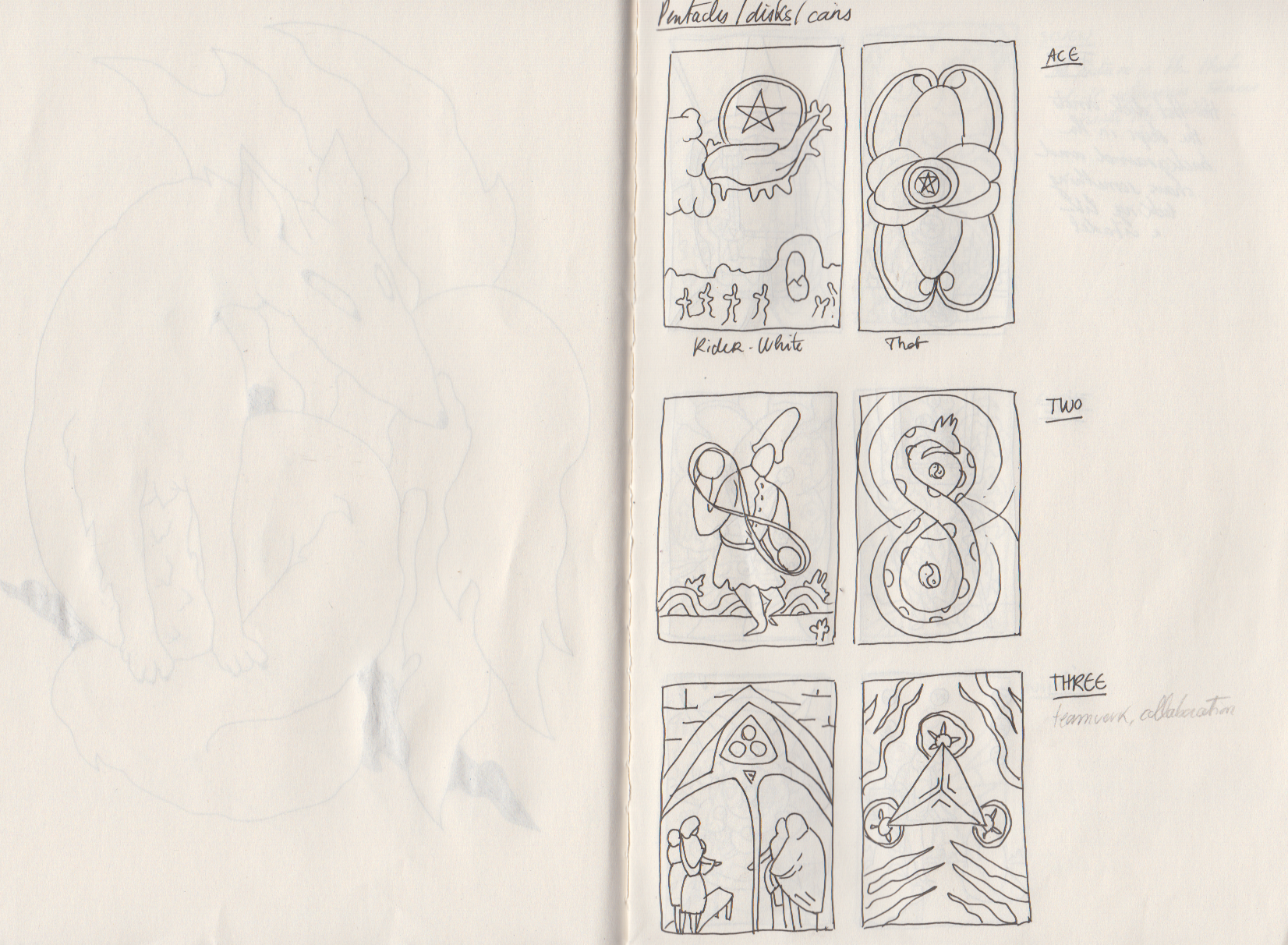


Defining a visual style
After several tries, I decided to go with linework illustrations with flat shading with gradients. I decided to forego most human-form allegories too, and designed a set of abtract symbols to represent each suit instead of drawing literal swords, cups, wands and coins into the cards.
The illustartion below shows different stages of this process applied to the beginning of suit of coins.
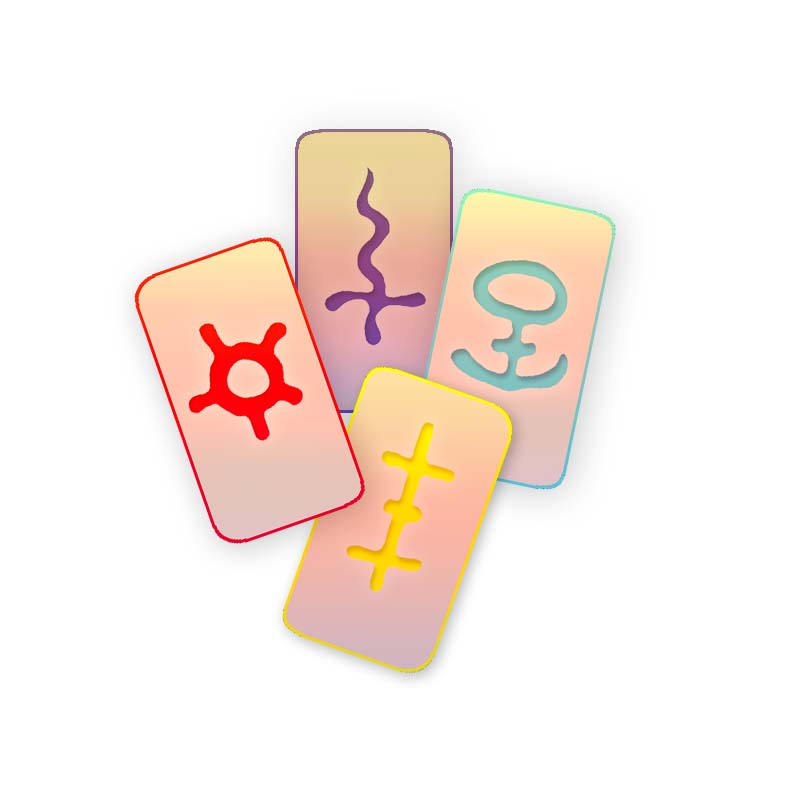
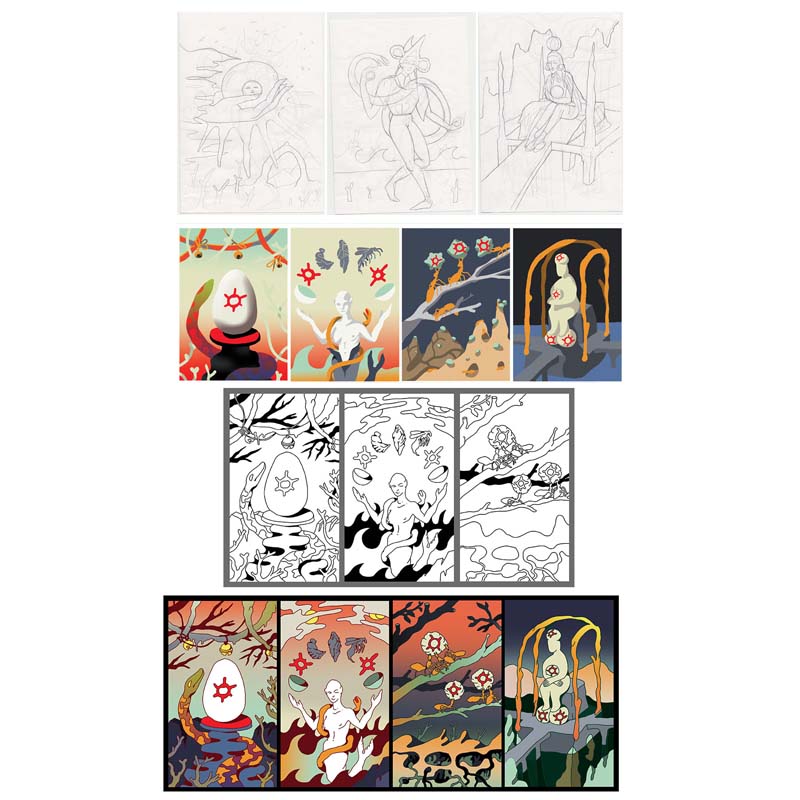
Closing note
That's it for now! ✨ On to designing all the cards of the deck!
Further links!
If you feel like digging further!
English
- https://marykgreer.com/ - Mary K.Greer tarot blog - quite scholarly and very in depth blog about the Tarot and it's history. Also here is a timeline of occult and divinary tarot by the same author.
- Little red tarot - online shop specialising in contemporary indie tarots.
French
- http://www.tarot-artisanal.fr/ - Tarot Artisanal - Great website of an artisan restauring and printing artisanal tarot decks using traditional techniques. Also interesting in-depth articles about several tarot topics and the process behind the edition of the artisanal cards.
- https://cathoutarot.blog/ - Cathou Tarot - for a queer and feminist take on the tarot, usually from a wiccan perspective.
- Les mystères du tarot de Marseille, 2015, Arte - Documentary tracing the link between the tarot de marseille and neoplatonic philosophy schools.
⟶ social media : tiktok - instagram - mastodon - bluesky
⟶ e-mail : contact me!